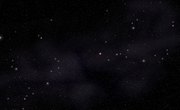
Until the beginning of the twentieth century, there was good reason for astronomers to believe that the universe was static -- that it had always been the way they saw it, and always would be. However, In 1929, a major discovery changed that viewpoint; today cosmologists believe that the universe began in a cosmic explosion, called the Big Bang, which happened about 14 billion years ago.
The Expanding Universe
In the early twentieth century, astronomer Edwin Hubble noticed that some stars appeared to be much further away than previously believed. In fact, they weren't stars at all -- they were collections of stars, or galaxies, distant from the one in which we live. Hubble studied the light these galaxies gave off, and used it to determine how far away they were. In the process, he found that the light was shifted toward the red end of the spectrum. This meant that the galaxies were speeding away, which in turn meant that the universe was not static -- it was (and still is) expanding.
The Beginning of the Universe
If the universe is expanding, then it must have started at some point in time and space, and thus it must be possible to trace its expansion to that point. By carefully measuring the distances of galaxies and their red shifts, which correspond to the rate of their movement, scientists have deduced that the Big Bang occurred 13.7 billion years ago. At that time, space and matter existed in a single point called a singularity; an infinitesimally small and dense point. The Big Bang was not literally an explosion -- all we can really say is that it is the point at which space and time began to expand into the universe we know today.
The Beginning and the End
At the beginning of the universe, matter was so dense that the ordinary laws of physics didn't apply. Instead, everything functioned according to the laws of quantum mechanics, which rule the world of atoms and subatomic particles. Because of this, it's impossible to precisely describe what conditions were like, and it's just as difficult to accurately place the outer limits of the universe, which would be the leading edge of expansion. Scientists have proposed more than one scenario for the future of the universe. It may continue to expand forever, but eventually run out of heat, leaving everything cold and dead -- the Big Freeze. Alternatively, the universe may instead collapse back in on itself and end in a Big Crunch
More than One Universe
In the latter part of the twentieth century, astronomers began to earnestly study black holes, which had been predicted by Einstein's Theory of General Relativity. These are also singularities, and they occur when massive stars implode on themselves. Scientists now believe that black holes are common, and that one exists at the center of every galaxy, including ours. One way of looking at the Big Bang is as an ultra-super-massive black hole, which means it may not be unique. It's possible that there are others like it -- and thus other "multiverses." Many elementary physicists (scientists who study subatomic particles and even space itself) believe this is the case.
References
About the Author
Chris Deziel holds a Bachelor's degree in physics and a Master's degree in Humanities, He has taught science, math and English at the university level, both in his native Canada and in Japan. He began writing online in 2010, offering information in scientific, cultural and practical topics. His writing covers science, math and home improvement and design, as well as religion and the oriental healing arts.
Photo Credits
DWalker44/iStock/Getty Images
